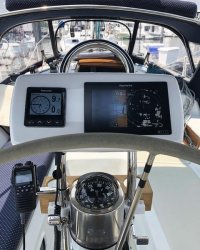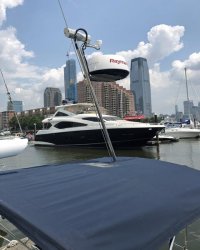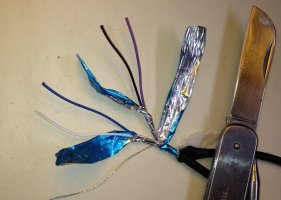ddoles
Member III
I'm finally getting around to sharing the electronics upgrade I completed this summer. Previously I had just the basic wind, speed, depth. The new set up includes Raymarine Axiom 9 MFD, AIS, Doppler radar (on gimballed backstay mount), i70s instrument display, new Standard Horizon VHF with RAM mic at helm and new wheel pilot. To accommodate everything, I also replaced the binnacle angle guard and installed a new Navpod housing. As you might imagine the design and installation of everything was a chore, but I'm happy with how it all turned out. I'm still learning how to use all these new wiz-bang electronics, but it is some powerful stuff. Some photos are included. I'd be happy to share other details for anyone interested or contemplating an upgrade.
Dave
Dave



